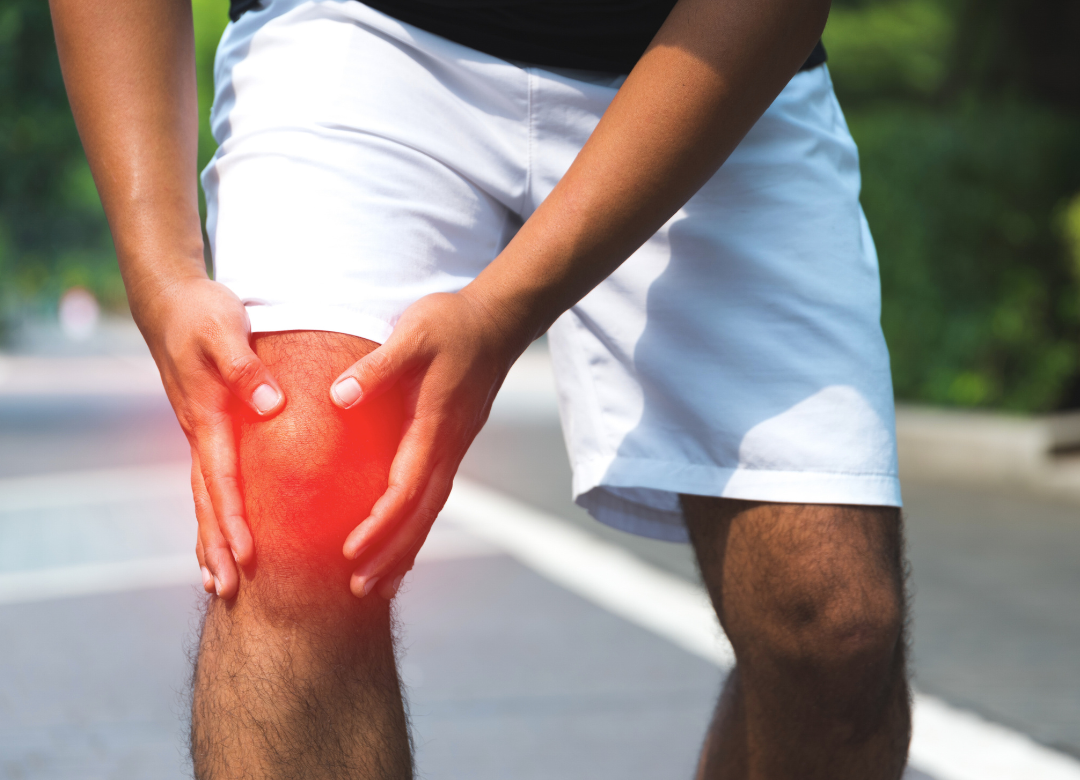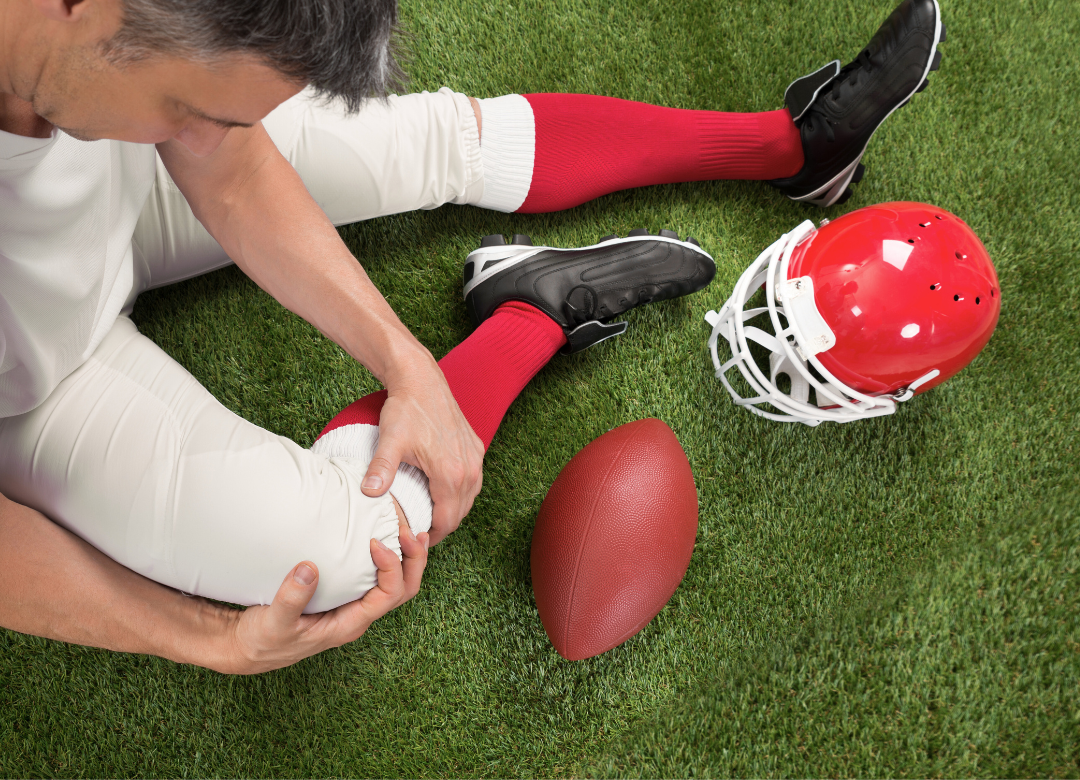
Understanding the Meniscus: What You Need to Know to Stay Active and Pain-Free
If you've ever felt a sharp pain in your knee after a quick pivot, deep squat, or an awkward landing, you might be dealing with a meniscus injury. The meniscus plays a crucial role in knee stability and function, but injuries are common among active adults and athletes. Whether you're dealing with knee pain now or just want to stay ahead of injuries, this blog will help you understand your meniscus, how injuries happen, and what you can do to recover and perform at your best.
1. What is the Meniscus and Why Does it Matter?
Your knee joint is made up of three bones: the femur (thigh bone), tibia (shin bone), and patella (kneecap). Between the femur and tibia sit two C-shaped pieces of cartilage called the menisci (plural for meniscus). You have one on the inner part of the knee (medial meniscus) and one on the outer part (lateral meniscus). The medial meniscus is the most commonly injured.
The meniscus serves several key functions:
- Shock Absorption: Helps distribute forces through the knee joint, reducing impact stress on the femur and tibia bones.
- Stability: Adds structural integrity, especially during twisting and cutting movements.
- Joint Lubrication and Nutrition: Aids in smooth knee movement, keeps cartilage healthy, and protects cartilage from early degeneration.
- Load Distribution: Ensures even pressure distribution, reducing the risk of early-onset arthritis.
2. Common Mechanisms of Meniscus Injuries
Meniscus tears typically occur in two ways:
- Traumatic Tears: Often seen in athletes and active adults, these happen during sudden movements like pivoting, cutting, deep squatting, or landing awkwardly from a jump. Sports such as basketball, soccer, and skiing carry a higher risk.
- Degenerative Tears: These develop gradually over time due to our normal aging process. Aging, repetitive stress, and poor movement mechanics with activity unpreparedness contribute to small, frayed tears that may cause pain and swelling.
3. Types of Meniscus Injuries
Meniscus tears come in different shapes and severities. The most common types include:
- Longitudinal (Bucket Handle) Tear: A tear that runs along the length of the meniscus, sometimes causing the torn piece to flip into the joint, leading to locking or catching of the knee when straightening and bending.
- Radial Tear: A tear that extends from the inner edge outward, disrupting the meniscus' ability to absorb impact forces.
- Horizontal (Cleft) Tear: Splits the meniscus into upper and lower sections, often seen in degenerative cases.
- Complex Tear: A combination of different tear patterns, making treatment more challenging.
Not all tears cause symptoms, and some may not require treatment at all, especially in older adults with mild degeneration.
4. Evaluating a Meniscus Injury: Special and Functional Tests
If you suspect a meniscus injury, a thorough assessment is essential. Sports physical therapists and healthcare providers use a combination of special tests and functional movement analysis to determine the severity of the injury.
Special Tests for Meniscus Tears:
- McMurray’s Test: The knee is bent and rotated with applied force by the medical provider to check for pain or clicking, which may indicate a tear.
- Apley’s Compression Test: The patient lies on their stomach while the knee is compressed and rotated to reproduce symptoms.
- Thessaly Test: The patient stands on one leg and twists with the knee straight followed by twisting with the knee bent; pain or instability suggests a meniscus tear.
- Childress Test: Also known as the Duck Walk Test, the patient squats down fully and “waddle walks”; pain or clicking around the knee joint line may indicate a meniscus injury.
Functional Movement Tests:
- Squat Assessment: Limited depth, pain, or shifting weight to one side may indicate a meniscus injury.
- Single-Leg Hop Test: Difficulty landing or pain with hopping can reveal issues with force absorption and stability.
- Lateral Agility and Cutting Movements: If twisting and lateral movements are painful, it may signal meniscus involvement.
While MRI can confirm a tear, it’s not always necessary, especially since many people with meniscus tears on MRI have no symptoms at all (Kemp et al., 2020).
5. Treatment, Prognosis, and the Rehab Plan for High-Level Activities
Do You Need Surgery?
The short answer: probably not. Research shows that many meniscus tears can heal successfully without surgery. In fact, studies comparing meniscus surgery (meniscectomy) to placebo surgeries found no significant difference in long-term outcomes (Sihvonen et al., 2020). Even worse, removing part of the meniscus increases the risk of early knee osteoarthritis.
The Sports Physical Therapy Approach to Recovery
A structured rehab plan is the best way to regain knee function and return to high-level activities like strength training and sports. Here’s what to expect:
Phase 1: Pain Management and Early Mobility
- PEACE and LOVE
- Restore range of motion through gentle stretching and mobility exercises.
- Begin isometric strengthening to activate the knee and hip muscle groups without aggravating symptoms.
Phase 2: Strength and Stability Restoration
- Progress to bodyweight and resistance exercises like step-ups, squats, and lunges.
- Refine and incorporate balance and proprioceptive training (e.g., single-leg training).
- Rebuild core and hip strength to improve lower body control and movement efficiency.
Phase 3: Return to Sport-Specific Movements
- Introduce plyometric drills such as box jumps, hopping, and bounding.
- Gradually reintroduce cutting, pivoting, and sprinting drills to simulate sport demands.
- Continue progressive loading to build resilience in the knee and surrounding muscles.
Phase 4: Full Return to Activity
- Perform sport-specific drills at full intensity.
- Ensure pain-free movement and confidence in high-demand scenarios.
- Continue strength and mobility maintenance to prevent regression or re-injury.
Reducing Your Risk of Meniscus Injury
Even if you’re not dealing with a tear, keeping your meniscus healthy is key. Here are some tips:
- Warm up properly with dynamic movements before workouts or sport to prepare your knees for dynamic activity.
- Strengthen your quadriceps, hamstrings, calves, and glutes to support knee health and performance.
- Work on mobility—stiff hips and ankles can put additional strain on your knees.
- Listen to your body—if you experience knee pain, modify activities and address issues early.
Final Thoughts
Meniscus injuries don’t have to mean the end of your active and athletic lifestyle. With the right rehab plan, most people can return to full function and performance without surgery. If you're a Tampa athlete struggling with knee pain or want a customized plan to stay strong and injury-free, we can help. At Crossover Physical Therapy and Performance, we specialize in helping athletes and active adults recover and crush their fitness goals. Let’s keep you moving pain-free!


